 Facebook
Facebook
 X
X
 Instagram
Instagram
 TikTok
TikTok
 Youtube
Youtube
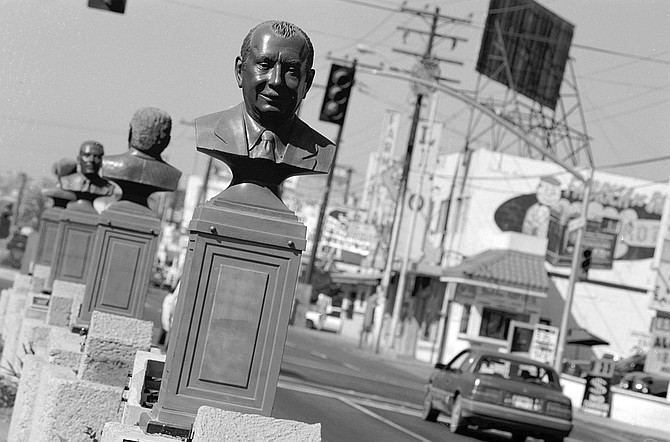
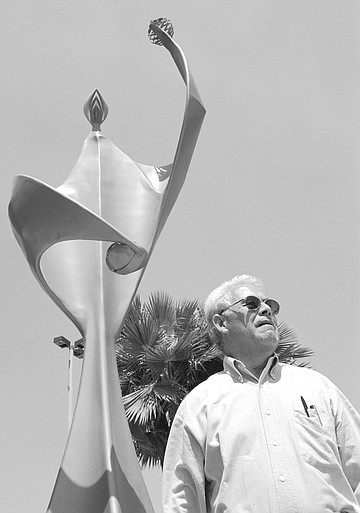
"Just like Florence, just like Rome, Tijuana, too, has its monuments."
Professor Julio Rodríguez steers his blue Ford through Zona Rio, gesturing at one statue after another.
"And what are monuments? What do they represent? They represent the dreams, the history, the values of a people, of a culture."
Professor Rodríguez twice circles a roundabout dominated by a statue of Cuauhtémoc, the last Aztec emperor.
"The Spaniards shoved Cuauhtémoc's feet into fire to make him say where the Aztecs hid their gold. Of course, he didn't tell them anything.
By Abe Opincar, Oct. 18, 2001 | Read full article
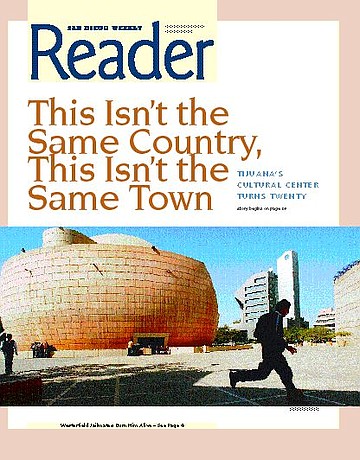
“On the morning of January 20, 1974, the police came. The neighborhood’s name was Tierra y Libertad, ‘Land and Liberty.’ The police marched right into the neighborhood. Perhaps they were state police. I’m not sure. They came in and arrested several people, the leaders of Tierra y Libertad, the people who’d really organized the neighborhood. Others were arrested at work or wherever the police could find them. Worse was to come.
By Abe Opincar Oct. 10, 2002 | Read full article
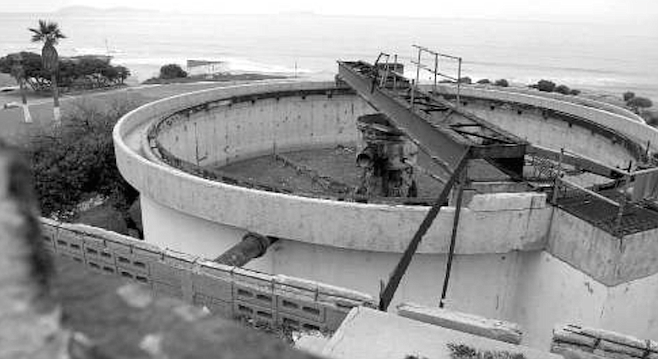
In San Diego County, treated sewage is discharged four miles out to sea from six treatment plants dotting the coast from the border to San Onofre. In Mexico, one treatment plant at San Antonio de Los Buenos, 12 kilometers south of the fence, releases a mixture of treated and untreated sewage down a creek that flows into the surf zone. So it came as a surprise to some when Mexican newspapers reported that a municipal official, Miguel Angel Avila Niebla, in a talk to a civic booster group in the Playas de Tijuana area, called Grupo Madrugadores, had boasted that the ocean water at Tijuana's beaches had tested cleaner in 2001 than at San Diego's beaches.
By Ernie Grimm, Oct. 24, 2002 | Read full article
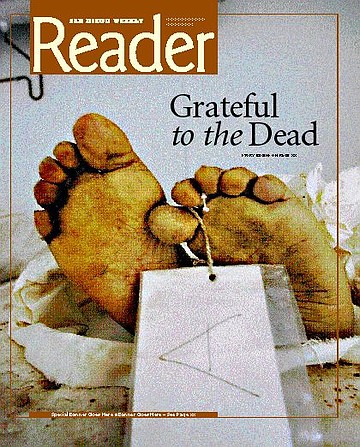
Earlier in the day I attended a one-hour lecture given by Dr. Luis Antonio Martínez, a dental surgeon who teaches anatomy to students at the university’s dentistry school. His lecture was attended by 20 first-year students, of whom only 2 were male. Dr. Martínez was preparing his students for their first cadaver dissection. On the blackboard he drew a simple human face — ears, eyes, nose, mouth, chin.
“Next week you will first make a straight, horizontal, seven-centimeter incision two centimeters below the lip.”
By Abe Opincar, Oct. 31, 2002 | Read full article

San Diego — Just north of Third Street, on the east side of Avenida Revolución, florista Esperanza Cervantes and her husband José Arias sit in metal folding chairs. Their backs are to the street. Across the street, American rap music thumps from the second-story Club Animale. The two take no notice of it. Nor do they respond to the exploding M-80s somewhere nearby that make others around them jump. After 30 years of selling paper flowers in this spot, they're used to the sights and sounds of this tourist strip.
By Ernie Grimm, Dec. 12, 2002 | Read full article
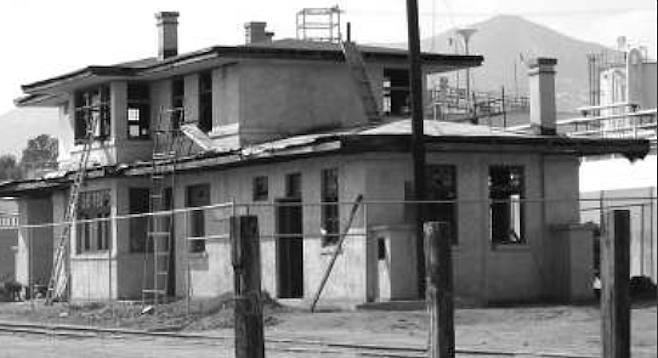
Restoring the Tecate train station is Maria Castillo Curry's obsession. "My Ph.D. dissertation is on railroad stations. When I started work, the railroads were undergoing privatization, and the Mexican government didn't know how many railroad stations were in the country. So I traveled around the country and have 1500 photos of railroad stations in Mexico. There are 2611 stations there, and I've seen all of them. I know that there is no other railroad station like this in Mexico. I'm so busy that I don't sleep at night anymore!"
By Robert Kumpel, Dec. 19, 2002 | Read full article



"Just like Florence, just like Rome, Tijuana, too, has its monuments."
Professor Julio Rodríguez steers his blue Ford through Zona Rio, gesturing at one statue after another.
"And what are monuments? What do they represent? They represent the dreams, the history, the values of a people, of a culture."
Professor Rodríguez twice circles a roundabout dominated by a statue of Cuauhtémoc, the last Aztec emperor.
"The Spaniards shoved Cuauhtémoc's feet into fire to make him say where the Aztecs hid their gold. Of course, he didn't tell them anything.
By Abe Opincar, Oct. 18, 2001 | Read full article

“On the morning of January 20, 1974, the police came. The neighborhood’s name was Tierra y Libertad, ‘Land and Liberty.’ The police marched right into the neighborhood. Perhaps they were state police. I’m not sure. They came in and arrested several people, the leaders of Tierra y Libertad, the people who’d really organized the neighborhood. Others were arrested at work or wherever the police could find them. Worse was to come.
By Abe Opincar Oct. 10, 2002 | Read full article

In San Diego County, treated sewage is discharged four miles out to sea from six treatment plants dotting the coast from the border to San Onofre. In Mexico, one treatment plant at San Antonio de Los Buenos, 12 kilometers south of the fence, releases a mixture of treated and untreated sewage down a creek that flows into the surf zone. So it came as a surprise to some when Mexican newspapers reported that a municipal official, Miguel Angel Avila Niebla, in a talk to a civic booster group in the Playas de Tijuana area, called Grupo Madrugadores, had boasted that the ocean water at Tijuana's beaches had tested cleaner in 2001 than at San Diego's beaches.
By Ernie Grimm, Oct. 24, 2002 | Read full article

Earlier in the day I attended a one-hour lecture given by Dr. Luis Antonio Martínez, a dental surgeon who teaches anatomy to students at the university’s dentistry school. His lecture was attended by 20 first-year students, of whom only 2 were male. Dr. Martínez was preparing his students for their first cadaver dissection. On the blackboard he drew a simple human face — ears, eyes, nose, mouth, chin.
“Next week you will first make a straight, horizontal, seven-centimeter incision two centimeters below the lip.”
By Abe Opincar, Oct. 31, 2002 | Read full article

San Diego — Just north of Third Street, on the east side of Avenida Revolución, florista Esperanza Cervantes and her husband José Arias sit in metal folding chairs. Their backs are to the street. Across the street, American rap music thumps from the second-story Club Animale. The two take no notice of it. Nor do they respond to the exploding M-80s somewhere nearby that make others around them jump. After 30 years of selling paper flowers in this spot, they're used to the sights and sounds of this tourist strip.
By Ernie Grimm, Dec. 12, 2002 | Read full article

Restoring the Tecate train station is Maria Castillo Curry's obsession. "My Ph.D. dissertation is on railroad stations. When I started work, the railroads were undergoing privatization, and the Mexican government didn't know how many railroad stations were in the country. So I traveled around the country and have 1500 photos of railroad stations in Mexico. There are 2611 stations there, and I've seen all of them. I know that there is no other railroad station like this in Mexico. I'm so busy that I don't sleep at night anymore!"
By Robert Kumpel, Dec. 19, 2002 | Read full article
Comments